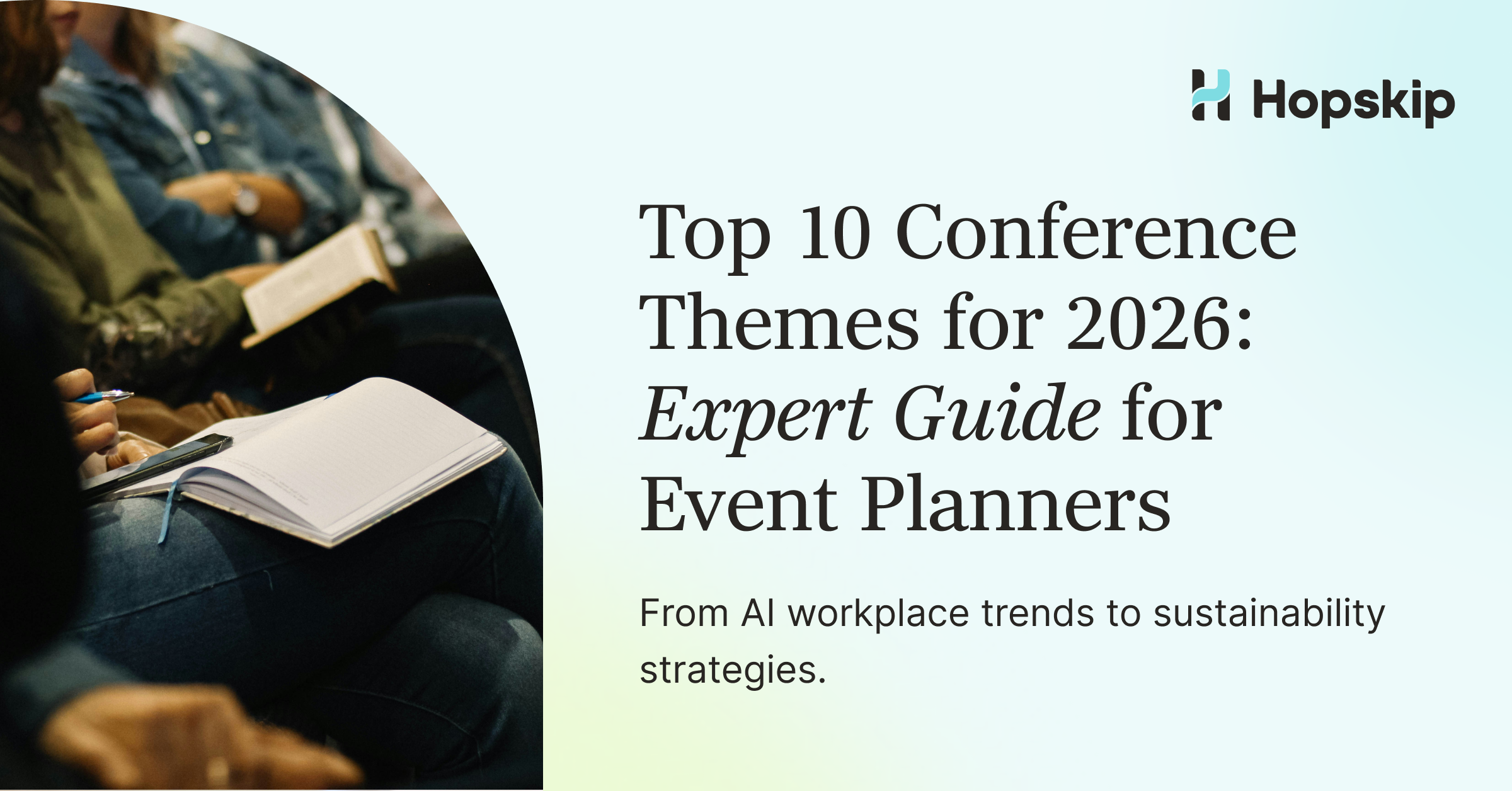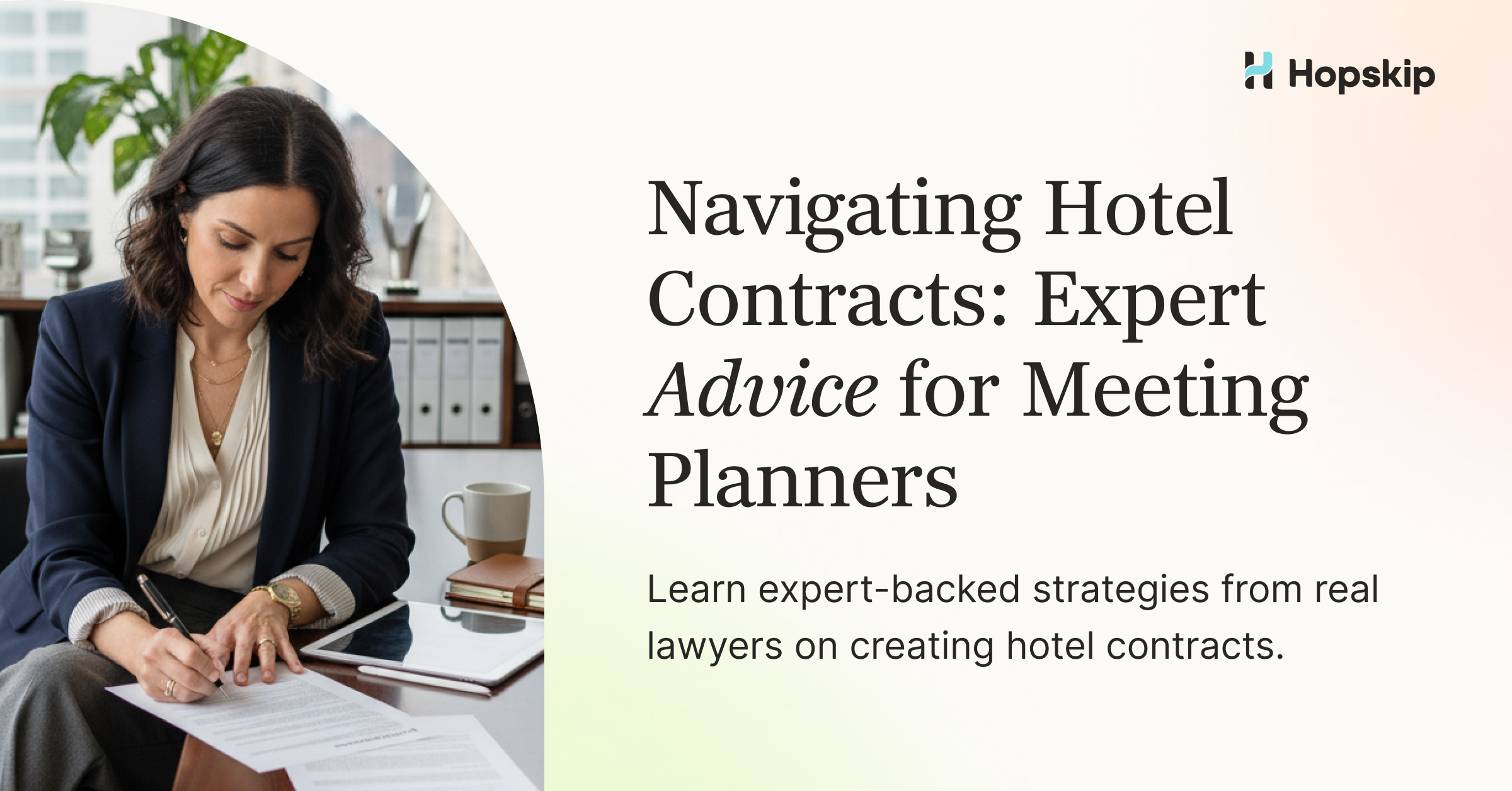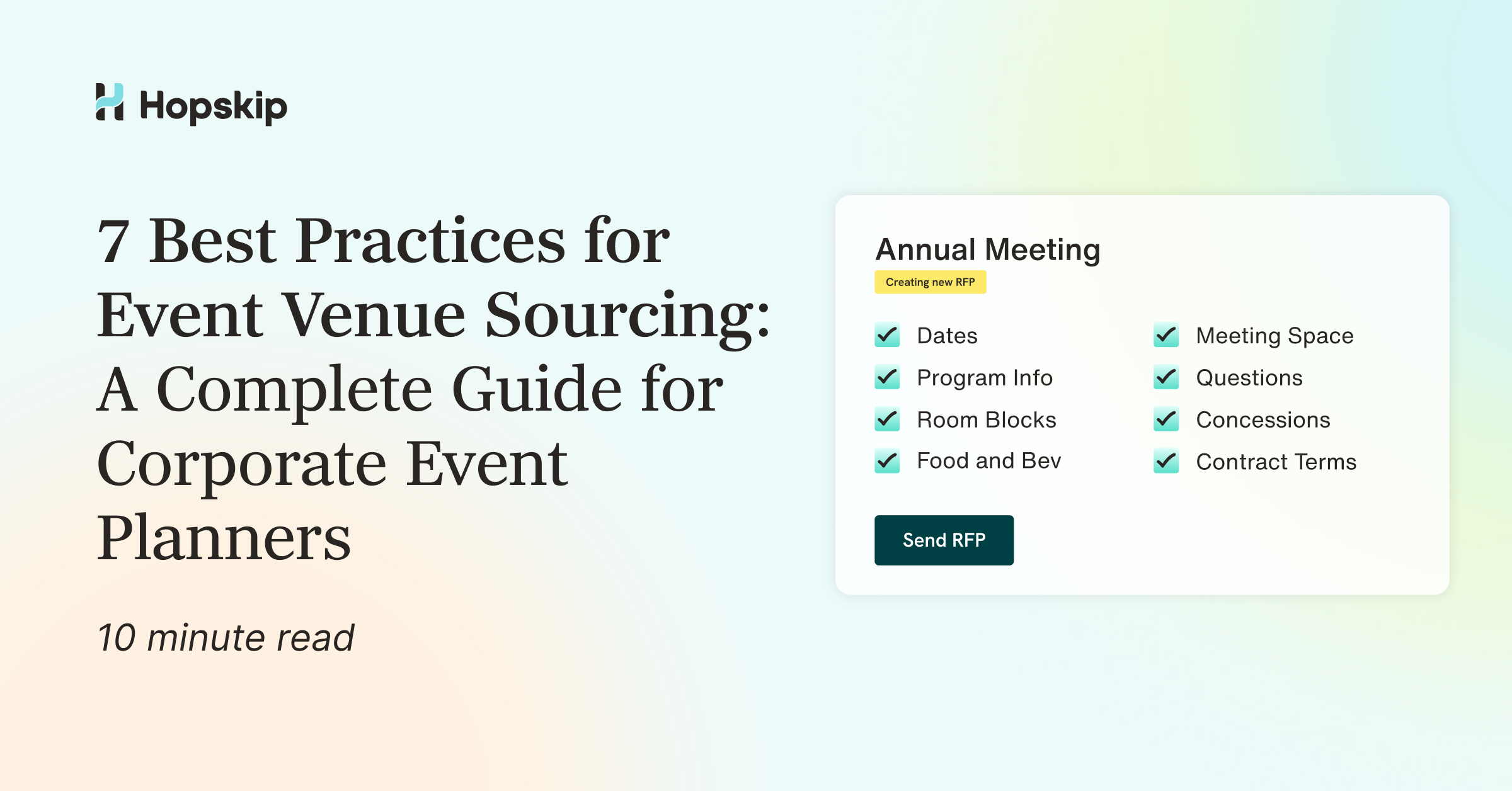Elevating Event Planning: Tips, Insights, and Best Practices from an Industry Pro
Kate Robertson
Sep 23, 2025

Event planning blends creativity, logistics, and client service into one of the most dynamic industries today. Few understand the nuances of the work better than Katie, an experienced event planner who has spent her career in the San Francisco Bay Area. From venue sourcing to budgeting, from technology adoption to attendee engagement, Katie has refined a process that delivers smooth, successful, and memorable events.
Katie’s Journey Into Event Planning
Katie earned her Bachelor of Science in Hospitality and Tourism Management from San Francisco State University. During her final semester, she interned with Elizabeth Bainbridge at 2 the 9s Events, an experience that confirmed she had found the right career path. Since then, Katie has continued to grow within the industry, helping to produce events that balance flawless execution with unforgettable experiences. Her career reflects a genuine passion for event production:
“The joy of an event well planned makes every moment worthwhile.”
Key Phases of Event Planning
Katie emphasizes that success in event planning requires careful attention at every stage. Below are the phases she considers essential, along with the challenges and solutions she has seen first-hand.
1. Venue Selection
Venue sourcing begins with reviewing a client’s needs and priorities. Katie creates a venue comparison matrix to evaluate each option, considering capacity, technical requirements, accessibility, and costs. Site visits follow, ensuring the chosen venue aligns with client expectations.
Tips for planners:
- Define client needs in order of importance.
- Conduct thorough research on properties, availability, and hidden costs.
- Schedule in-person site visits whenever possible.
- Review contracts closely for cancellation clauses and extra fees.
Pro Tip: Always negotiate Wi-Fi and AV package costs upfront—they’re among the most common hidden venue fees.
2. Budgeting and Financial Management
Financial challenges are common in event planning, often due to hidden costs or unrealistic expectations. Katie stresses the importance of open communication with venues, vendors, and clients. She also builds contingencies into every budget to cover unexpected costs such as permits, weather accommodations, or annual price increases.
Tips for planners:
- Separate must-haves from nice-to-haves.
- Build a contingency fund of 10–20% of the total budget.
- Regularly update the budget with actual vs. projected expenses.
- Proactively ask vendors about seasonal or recurring increases.
Pro Tip: Share budget updates with all key stakeholders weekly—preventing small surprises from becoming major problems.
3. Leveraging Technology
Katie and her team rely heavily on technology to stay organized. Tools like Google Suite keep documents centralized, DocuSign streamlines contracts, Zoom supports remote meetings, and Prismm helps visualize floor plans.
Tips for planners:
- Maintain a shared project plan to track milestones and deadlines.
- Use contract management software to reduce errors and delays.
- Incorporate visual layout tools to improve event design and flow.
4. Enhancing Attendee Experience
Events succeed when attendees feel engaged and connected. Katie has found that networking challenges—such as randomly assigned team activities—help participants bond over shared goals in fun, low-pressure settings.
She recalls one corporate retreat where attendees were split into random “escape room teams.” The activity sparked laughter, encouraged collaboration, and helped executives mingle with junior staff they might not otherwise have met.
Tips for planners:
- Introduce icebreakers and team challenges.
- Ensure venue layouts encourage natural mingling.
- Gather attendee feedback post-event to identify areas for improvement.
5. Risk Management and Emergency Planning
Katie approaches unexpected challenges with calm and collaboration. Whether it’s weather disruptions or vendor cancellations, she relies on clear communication and a “we’re all on the same team” mindset with venues and vendors.
Tips for planners:
- Conduct risk assessments early.
- Keep contingency vendors and backup plans ready.
- Review contracts for liability and force majeure clauses.
6. Post-Event Debrief
After an event concludes, Katie conducts a thorough debrief with clients, vendors, and attendees. Payments are finalized, budgets reconciled, and feedback gathered. For recurring events, planning for the following year begins immediately.
Tips for planners:
- Use surveys to gather insights from attendees and stakeholders.
- Track KPIs such as attendance, budget accuracy, and satisfaction.
- Document lessons learned to improve future planning.
KPIs to Measure Event Success:
- Attendee Satisfaction Scores: Post-event surveys to gauge overall experience.
- Net Promoter Score (NPS): Measures attendee loyalty and likelihood to recommend.
- Engagement Metrics: Social media activity, app usage, or live polling participation.
- Budget Accuracy: Comparing projected vs. actual spend.
- ROI for Sponsors: Leads generated, booth traffic, or brand impressions.
Pro Tip: Always debrief within 48 hours while details are fresh—this ensures feedback is actionable.
Future Trends in Event Planning
Katie also emphasizes the importance of staying ahead of industry shifts. Emerging trends shaping the future of events include:
- Sustainability: Venues with green certifications, composting, and zero-waste catering.
- Hybrid and Virtual Events: Leveraging platforms for global reach.
- Accessibility: ADA-compliant venues, sensory-friendly spaces, and captioning services.
- Personalization: Customized agendas and unique attendee journeys.
Planners who embrace these trends not only future-proof their events but also deliver experiences that resonate with modern audiences.
Advice for Aspiring Event Planners
Katie encourages newcomers to explore different roles in the industry—whether in catering, venue management, or event production. Exposure to multiple facets helps new planners discover their strengths. She also stresses the importance of maintaining work-life balance, especially during peak seasons. Her final advice:
“Absorb as much knowledge as you can and always prioritize balance. Burnout benefits no one.”
Why Hopskip Makes Event Planning Easier
Event planners like Katie juggle countless moving parts: venues, vendors, contracts, budgets, and attendees. Hopskip was built to simplify these processes. With Hopskip, planners can:
- Manage venue comparisons and proposals in one centralized platform.
- Track budgets, contracts, and communication histories.
- Store reusable templates for efficiency.
- Collect post-event feedback and measure performance.
Instead of juggling spreadsheets and email threads, Hopskip brings the entire process together—saving time, reducing costs, and ensuring no detail slips through the cracks.
Best of all, event planners can start using Hopskip for free to see how it streamlines workflows and reduces stress.
Key Takeaways
- Define client needs clearly before sourcing venues.
- Build budgets with contingency funds to cover hidden costs.
- Use technology for contracts, floor plans, and communication.
- Create engaging attendee experiences with networking activities.
- Prepare for emergencies with clear contingency planning.
- Track KPIs to evaluate event success and improve year after year.
- Stay ahead of future trends like sustainability and accessibility.
Get started with Hopskip
Ready to streamline your event planning process? Start with Hopskip for free today and see how it helps streamline your vendor sourcing process.




